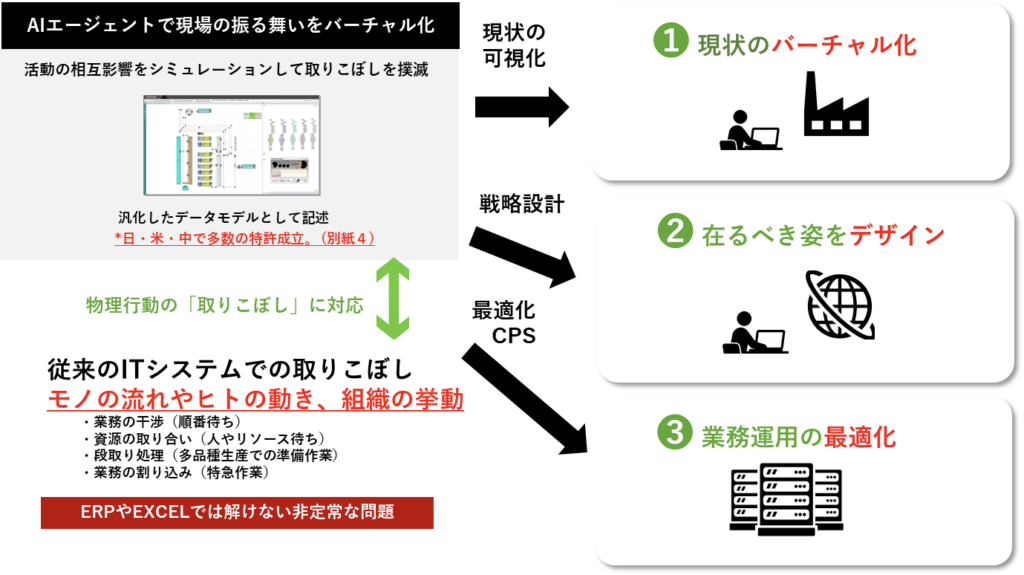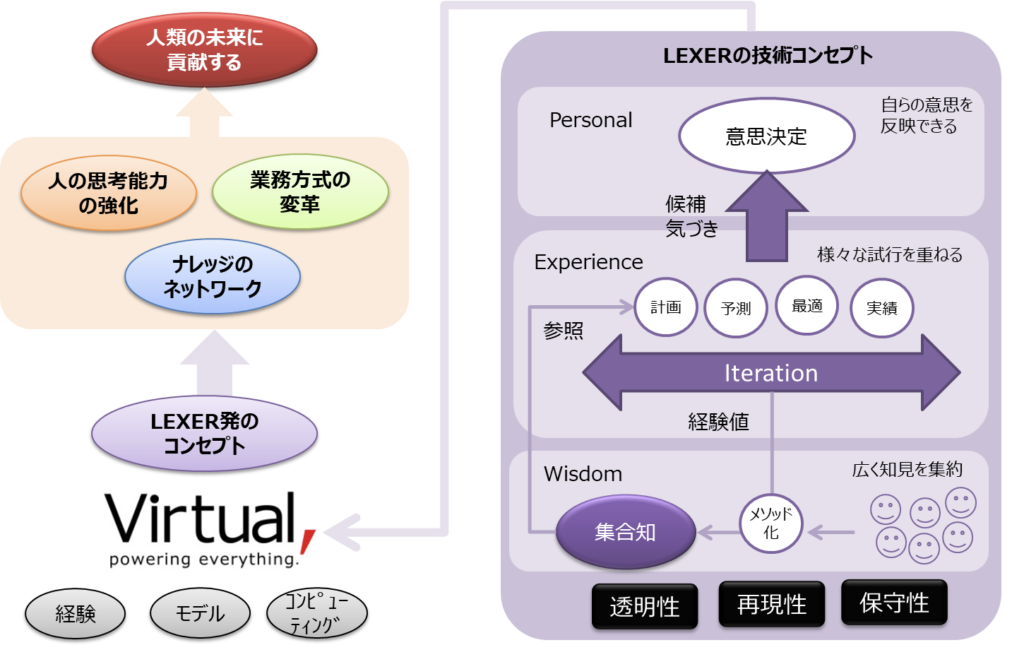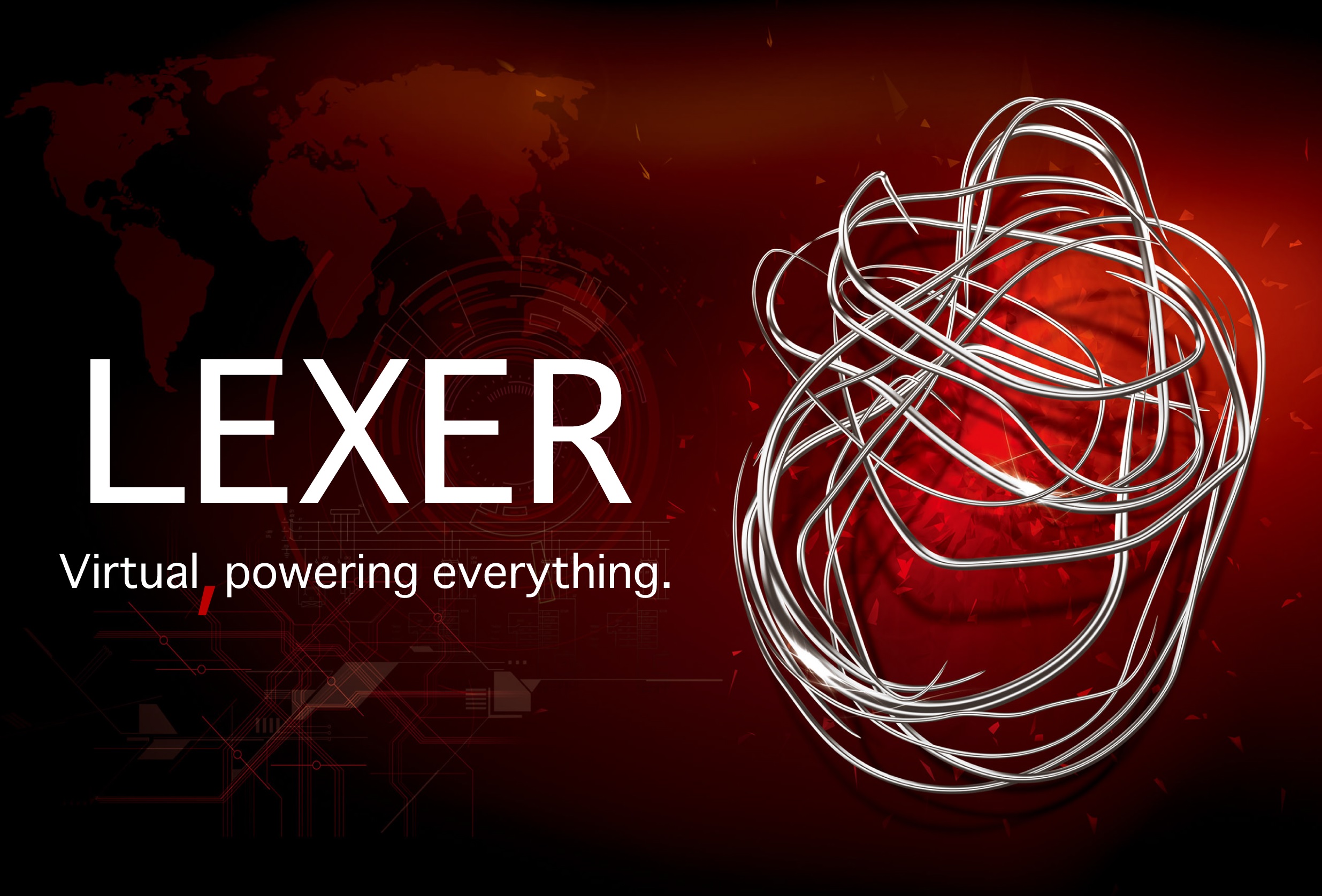
The value our technology aims to achieve
Democratization of mechanisms for generating knowledge
The democratization and dissemination of the means to promote creative and constructive design will give new meaning to people’s social activities.
- Promoting awareness and understanding of an expanding and diverse world through ‘virtual’ means
- Hypothesis testing, system design and decision support through predictions of selectable futures
- Supporting activities that co-create people’s accumulated experience through collaboration
ICT and network technologies have the potential to revolutionize society, just as the steam-powered industrial revolution did. We believe that ICT will bring real change to business and society in the coming era.
Innovations in Process Management
Integrate physical behavior (behavior of objects and people) and business processes at the physical layer as an overall structure of the business world. This system deals with irregularities in the field.
In the field, which is the basis of business activities, “activities” are non-routine (dynamic) and it is difficult to predict the flow of goods, movement of people and the behavior of the organization. This “omission” makes it difficult to obtain primary data for calculating CO2 emissions and is an obstacle to optimizing organizational coordination with DX. Therefore, we promote the diffusion of intelligent GHG systems that automatically calculate CO2 emissions, as well as methods and platforms that optimally control the integrated operations of different organizations, gaining control of “activities” through cyber-physical technologies that virtualize on-site activities, including physical activities.

We promote the virtualization of non-routine behavior in the field and optimize the “activity” of the field by covering elements traditionally “missed” by IT.

The technology that Lexer pursues
We provide a platform to drive business innovation for the age of change through a range of applications based on the following technologies
Proprietary Data Model ‘FINDI’
Provides a framework that integrates the policies and conditions of disparate activities through a modular structure of disparate elements such as business processes/facility capacity and layout/operational resources. It seamlessly covers diverse operations and flexibly responds to changes in the business environment by recombining modules.
Cyber Physical System
Technology to optimally connect heterogeneous activities at the cyber layer as a CPS. Deductively and automatically generates multiple solution spaces through multiplexed simulation, making the most of fast and inexpensive computing power. Bird View provides a bird’s eye view of conflicting factors such as productivity improvement, inventory reduction, on-time delivery, and CO2 minimization, and derives the optimal solution for multiple purposes. Support for non-routine business areas that are difficult to address with machine learning and deep learning.
Experience / Dialogue and Knowledge Accumulation
HIL (Human in the Loop) is configured through an environment where users iterate in the cloud and the experience values generated from this iteration are converted into a knowledge base. This is a mechanism that allows users to create libraries of data models and optimization methods that can then be replayed and reused.
Value creation created by the virtual
Objective/To support business innovation by linking management and field activities to successfully implement DX.
- One of the management problems is the current situation in which the management and the field are separated, and the operation is left to the field, which is difficult to manage due to the inability to grasp the condition of the field.
- In order to respond to high-mix, low-volume production, order fluctuations, changes in market structure, supply chain disruptions, etc., it is essential to strengthen on-site management to flexibly and quickly change overall organizational operations and promote strategic business reforms.
- On the other hand, flexible and agile operations (non-routine activities) are needed in the field to respond to order status, product specifications, equipment constraints, etc., and they rely on on-site geriatric know-how, which is limited in quantity and capacity. In addition, kaizen activities, etc. are necessary, but are rework and failure costs. The key is DX, which can strategically address these issues.
- However, traditional IT such as ERP “misses” non-routine activities that are at a level that cannot be ignored for business innovation, so Lexer HDM will cover this and connect management and the field.
Significance and Value / Fostering constructive and integrated DX not supported by traditional IT
①(Maximum Potential) Increase the impetus for implementation by presenting a reasonable ideal that can be achieved.
②(Failure Costs) Eliminate failure costs and waste by predicting problems that may occur and taking corrective action.
③(Overall Optimization) Dynamically optimize the whole by integrating heterogeneous operations with different goals for each organization.


